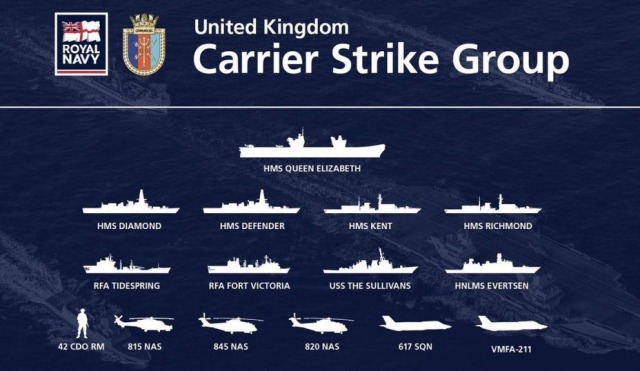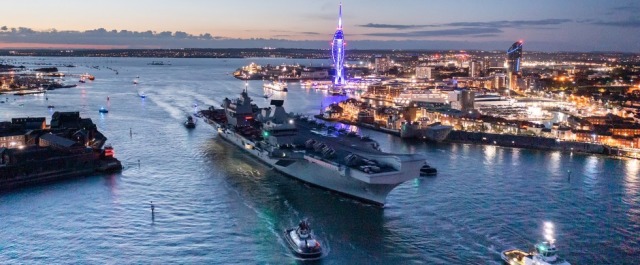The aircraft carrier HMS Queen Elizabeth has begun its first operational deployment. Yesterday, May 23, the press service of the Royal Navy reported that the aircraft carrier group left the naval base in Portsmouth and went on a 28-week journey.
As planned, the first deployment will be global and will cover the Mediterranean Sea, the Indian Ocean and the Indo-Pacific region. HMS Queen Elizabeth will be accompanied by 8 ships and a submarine.
Launch of the carrier group for operational deployment
"As part of the deployment, the carrier group will engage with more than 40 countries during its 26,000 — nautical-mile global tour, conducting more than 70 engagements, exercises and operations with allies and partners," the UK Defense Ministry said in a statement.

Composition of the aircraft carrier group
Image source: royalnavy.mod.uk
HMS Queen Elizabeth is the lead ship of a series of two of the newest British aircraft carriers. The Queen's wing consists of F-35B Lightning II fighter-bombers and Merlin helicopters (up to 40 vehicles with the possibility of expanding the wing to 70 units), in addition, the aircraft carrier can carry attack and heavy military transport helicopters, as well as -22 Osprey tiltrotor aircraft. The basic air wing has 12-35B, the crew-less than 700 people (plus 300 people from the air wing), with full combat readiness, the ship can accommodate up to 1,600 people.
The British aircraft carrier is smaller than its "American" counterparts, does not have a nuclear reactor and a catapult. The length of the Queen Elizabeth is 280 m, width-73 m, total displacement exceeds 70,000 tons. The ship can reach speeds of up to 25 knots (46 km / h), and its autonomy is 10,000 miles or almost 300 days of navigation.

